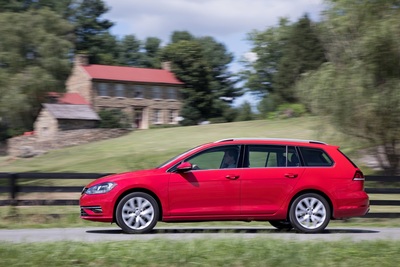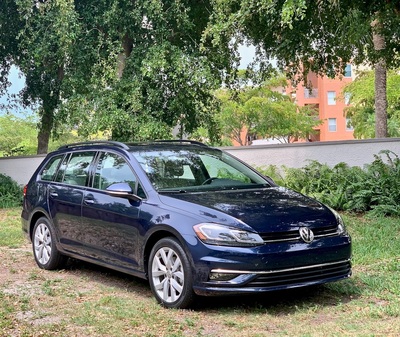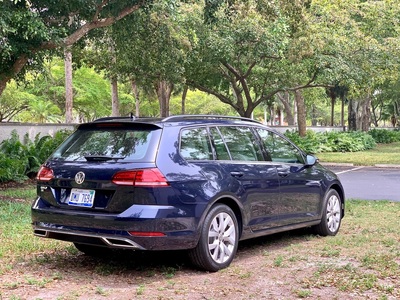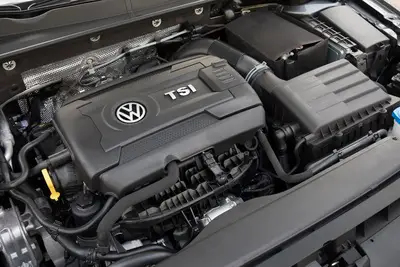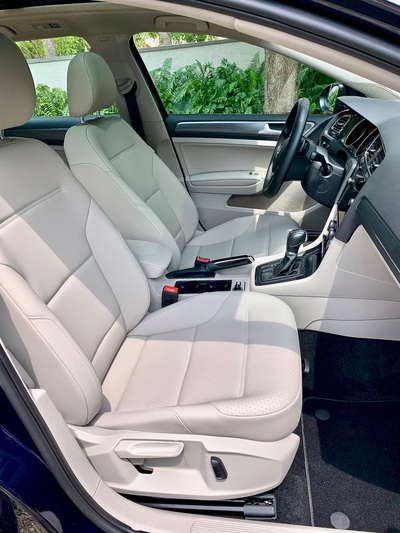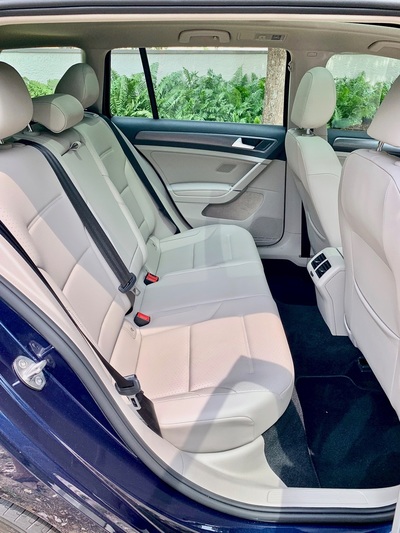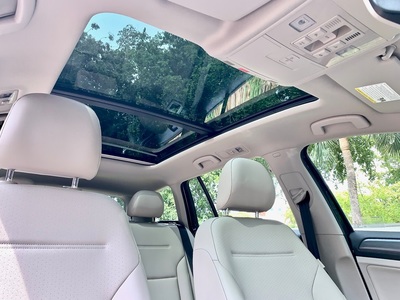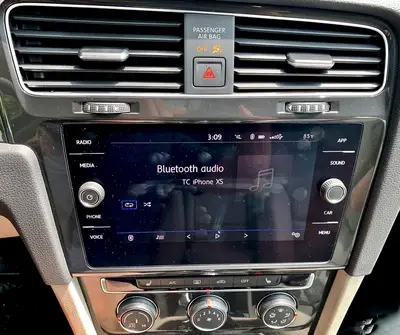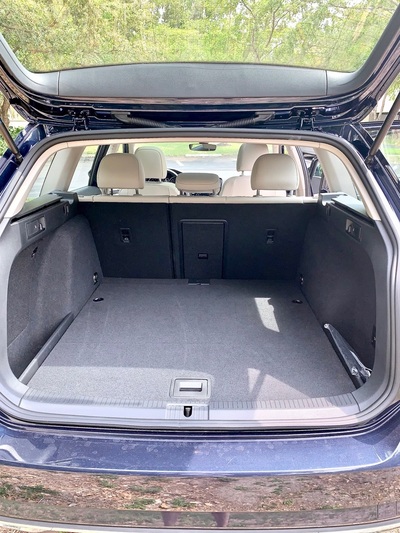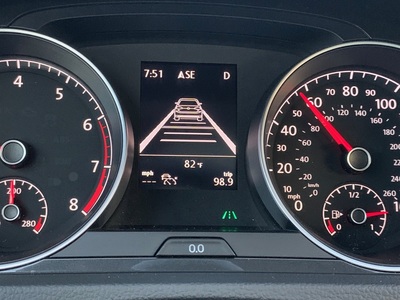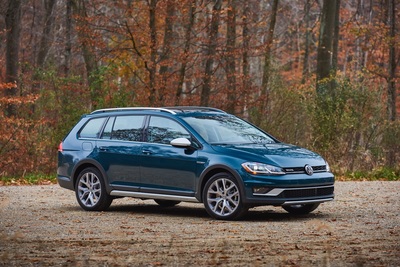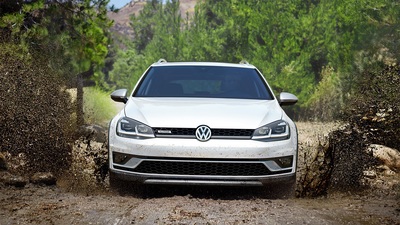2020 Volkswagen Jetta SportWagon and Jetta Alltrack; two reasons to ditch your crossover
By Thom Cannell
Senior Editor and Technology Guru
Michigan Bureau
The Auto Channel
Once there were cars, trucks—and station wagons. Before the minivan craze, before consumer lust for SUVs and Crossovers, families drove massive station wagons with names like Vista Cruiser and Sunbird, Skyhawk, Safari, and Roadmaster. Recently I drove two considerably smaller and more modern Volkswagen Golf-based wagons, each slightly different, either a delightful alternative to a small crossover.
Golf SportWagon
I'm a huge fan of wagons, even with their lack of privacy where a trunk lid could provide protection. My daily driver is a wagon.
Wagons have more capacity, are easier to load because of their bumper lift-in height, are typically smaller than most SUVs or crossovers, ride better as there is no attempt to be "off road capable" and have lower centers of gravity. They're easier to sit into and resemble a sedan, not a truck.
SportWagon, as a Golf derivative, brakes and steers well, delivers great handling and gets good fuel economy thanks to a 147-horsepower four-cylinder engine. It feels just like a Golf, one of the most revered passenger cars in the world.
Its interior is built of engineered polymers that I found to be subtly up-scale; well above a modest price that starts a tick above $21,000. There are soft surfaces in abundance, such as in the door bins; even fingernail-saving soft panels behind gloved hand-large door handles. A note about the doors, they open to almost 90-degrees facilitating entry for large or challenged drivers and passengers. I've had several questions about easy-entry vehicles from friends with injuries or joint replacements. SportWagon is easy to enter; however the H-point is low compared to a minivan or crossover. The trick is a swivel, just one, to sit into or exit.
Styling is conservatively sleek and enduring with seating for 4-5, and with an enormous 12-square foot sunroof with a manual sunshade. Once open you can tan. Other touches, like the leather-wrapped steering wheel, promote the feeling that the car—wagon—was designed and built for someone who likes to drive, demands quality and loves an engine that's sufficiently powerful. A clue was inclusion of paddle shifters meant for semi-manual transmission operation. VW calls it Tiptronic and it offers a Sport mode. In congested sun-coast Florida paddle shifters and Sport mode are more suggestive than required (but fun!). Well, sometimes I kept in a lower gear rather than let the transmission upshift into eighth gear; it provided more control and faster response. With that 8-speed transmission (FWD only, AWD models have a different transmission), 60-mph is 1,500 rpm for optimum fuel economy, which is EPA-rated at 37-highway.
Controls are rotary, always a favorite and equally intuitive. HVAC on this model were automatic though base models use equally effective manual controls. The phone system works as it should, however there's no Qi-charger for automatic mobile phone charging. A single USB connector (there should be two, or more) provides charging and connection to Apple Car Play, Android Auto or Sony Mirror Link, which splashes across an 8-inch touch-sensitive infotainment screen.
I think the seats are comfortable, once the bolsters are adjusted to your back's curvature. Rear seats provide plenty of leg-and-knee room and there's space for my 50-pound, barely legal duffle behind upright seats. With the 60/40 split rear seats folded, capacity is over 66 cubic feet!
Vehicle controls are easy to read. There are blind spot warnings in the mirrors, comforting when lurkers hide in the blind spot or when you're overtaken by 25-over-the-limit traffic.
There are automatic headlights and other "luxury" features like perforated heated leather seats. Often, I find that today's modestly priced cars provide features available only in the luxury spectrum just 5-10 years ago. The same goes for ride, comfort and quietness.
I switched on Lane Keeping, first not letting it provide assistance. Then, of course, I had to test its capabilities. Letting the car drift towards a lane marker, steering pushed me back towards the center, unless the turn signal was on. If hands are off for several seconds, a pictograph and alert reminds that you should have eyes on the road, not an iPhone or media channel.
Volkswagen Golf Alltrack
Regrettably, Alltrack has been deleted from the 2020 model line though a few remain on dealer lots. This wolf in sheepskin, based on the SportWagon, differs greatly. Foremost is its 4Mmotion all-wheel drive system. It’s a fully automatic system and, though not true locked-differential four-wheel drive, will get you where you need to go.
There are obvious differences that include distinctive wheels, bright body side cladding, front and rear underbody cladding, and an interior with aluminum pedals and enhanced brightwork.
Volkswagen rates Alltrack as "Off Road" worthy. What that means outside the marketing department is, it's at home on back roads, most tracks and trails, but not a bolder-climbing off-road capability. Alltrack rides a bit higher than its sibling, having a different suspension that’s meant to provide more clearance when you venture way from paved roads, and to protect the under-bits a protective skid plate. It also has a larger and more powerful engine, a 168 horsepower 1.8-liter turbocharged, and direct injected one. Along with that comes more torque, 199 lb-ft, so it's powerful in passing—which we'll get to.
To start a long trip over to Wisconsin, I selected the Eco mode, which quickly shifted into higher gears at lower rpm. It’s less than thrilling, but delivers better fuel economy. The highway, first US-127, is a divided highway, not a twisting two-lane or woodsy track so responsiveness wasn’t a pressing concern, which it would be on a two-track dirt road or twisting two-lane. However, in custom settings, we were able to alter steering to our preference. The result was a pleasing 30.6-mpg and 100-percent "Blue Score" while maximizing fuel economy. The Blue Score is discoverable within the infotainment system’s 8-inch screen. If you page to the correct vehicle report screen, your Blue Score evaluates multiple aspects of fuel economy. Alternatively, you can look at an available customizable Offroad info display showing steering wheel angle, compass direction, elevation and more among many pages of information.
More relevant to daily driving are standard features like pedestrian monitoring with the potential to automatically brake. It’s part of standard collision mitigation. Adaptive cruise control is available, and if used properly, smooth’s out highway driving. Blind Spot Monitoring, Lane Assist and Automatic Light Assist were features we used to advantage.
No matter how you adjust your side mirrors, some drivers love to hang out in your blind spot and Blind Spot assist is a joyous addition to safety with its in-mirror warning light. Lane Assist, which can nudge a drowsy or inattentive driver back into center-lane, can be helpful. Driving and passing on busy two-lane highways, we kept it off, but on freeways it stayed on.
Of all the options available, we most liked the adaptive front LED lighting. The LEDs were brighter, and the system steers somewhat into turns and automatically dims and returns to high beams. Most drivers seldom use their high beams, even on freeways. That’s giving up safety. Automated systems are very aggressive in recognizing both oncoming headlights and the taillights you’re overtaking. You won’t offend other drivers and you will automatically drive safer after dusk.
The return from Wisconsin across the Upper Peninsula of Michigan offered the best car test we’ve had in a very long time. Sunshine, beauty, and plenty of slower cars and trucks to pass, all designed to show the responsiveness of the Alltrack. Though power is modest on paper, on the road we passed with ease, brisk acceleration slinging us around slower vehicles with ease. Later, down on “the mitten”, those automatic headlights made driving at the posted 80-mph speed limit a safe, near-daylight experience.



